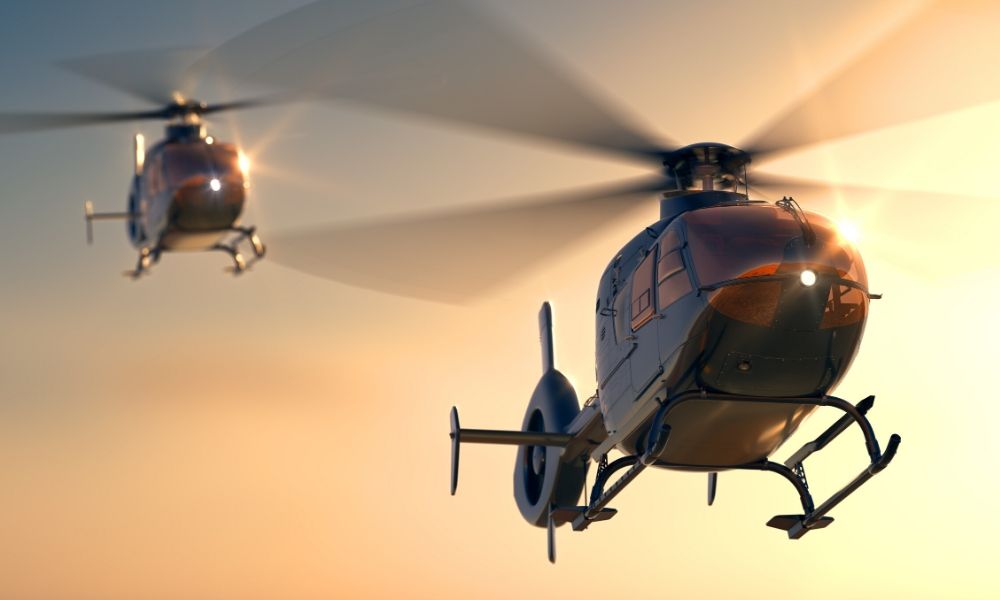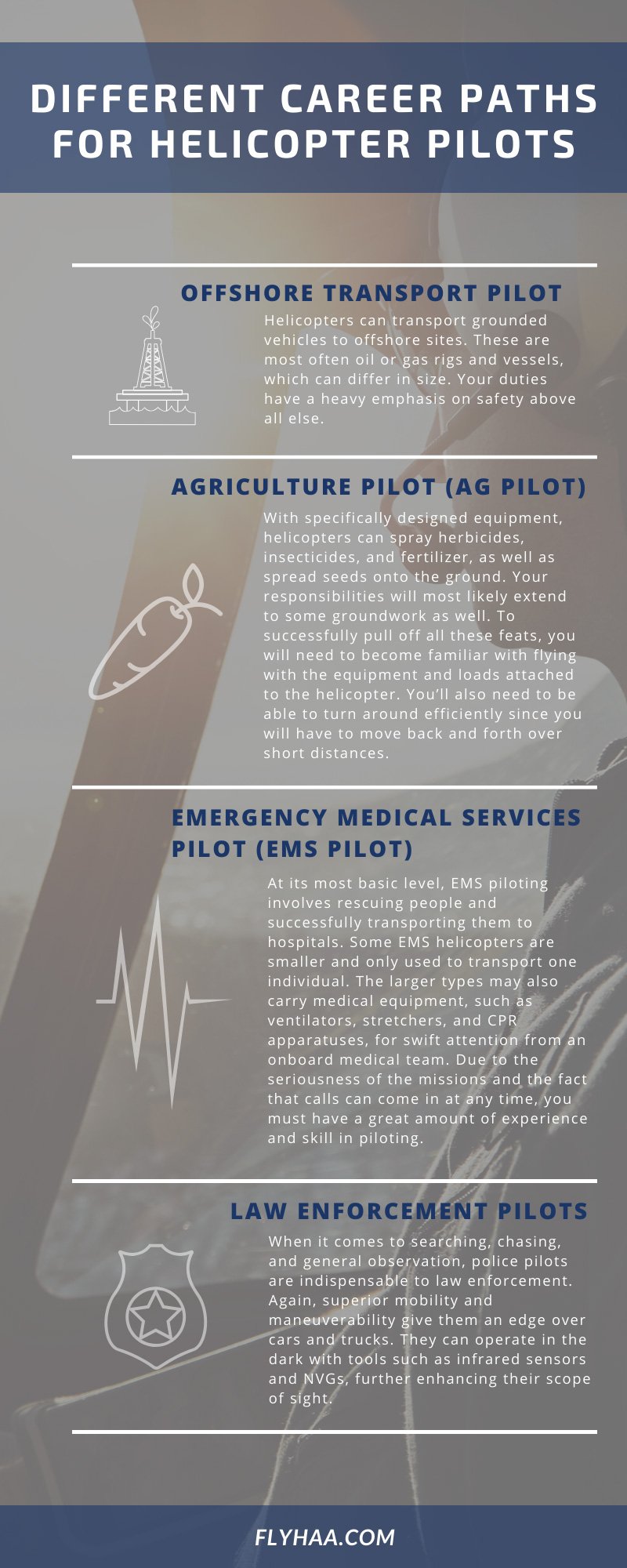
If you ever considered becoming a helicopter pilot, then you are probably curious about what kinds of jobs you can end up doing after you finish training. Although most everyone starts off the same by receiving general schooling on how to fly, it is a good idea to connect with various companies or agencies. This networking may eventually allow you to branch off into specialized fields that fit your interests and priorities. Here are just a few of the different career paths for helicopter pilots that exist today.
Offshore Transport Pilot
In the event a grounded vehicle cannot reach personnel, helicopters can transport them to offshore sites. These are most often oil or gas rigs and vessels, which can differ in size. Often, a company that provides helicopter transport services to oil and gas companies hires helicopter pilots in this field. This means you won’t have direct ties to the oil and gas corporations. Additionally, if you like to travel, this job might be for you. Some assignments can be in other countries depending on the needs of the clients that your helicopter operating company works with.
Your duties have a heavy emphasis on safety above else; you will not fly in more risky scenarios like some other helicopter specialists. To complete your routes as smoothly as possible, you need to always be aware of several factors. These include the conditions of the ocean and weather, any notices to airmen that warn you of the hazards on your path, and the state of the offshore rigs you are landing in. At times, these assignments may require you to stay overnight at these installations due to a long-distance from the land.
Agriculture Pilot (Ag Pilot)
You can also take advantage of the freedom that flight affords in farming. The clean, controlled, and quick sweeps that a helicopter can make over a field allow them to perform all kinds of duties. With specifically designed equipment, helicopters can spray herbicides, insecticides, and fertilizer, as well as seeds onto the ground. They can also mitigate the damage of frost on crops and dry fruits. On top of all these potential tasks, ag pilots may examine produce while it is still growing or keep count of cattle.
To successfully pull off all these feats, you will need to become familiar with flying with the equipment and loads attached to the helicopter. You will also need to be able to turn around efficiently since you will have to move back and forth over short distances. Moreover, due to the low altitudes that ag pilots must stay at, you will have to remain aware of obstacles that could get in the way, such as irrigation standpipes, trees, and wires.
Your responsibilities will most likely extend to some groundwork as well. As an illustration, if you are dispersing chemicals, you will have to clean out the components that hold them after you complete the task. This is to ensure the leftover traces don’t contaminate other crops and harm them. Each type of plant could need different chemicals to thrive, and you will have to know the distinctions well.
Emergency Medical Services Pilot (EMS Pilot)
Emergency medical services piloting entails higher pressure missions than many other fields. However, it can make a substantial difference for people in need of rescue or immediate medical attention. At its most basic level, EMS piloting involves rescuing people and successfully transporting them to hospitals. Medical professionals employ this over regular ambulance rescue in certain cases because helicopters can reach areas inaccessible by road—especially in more isolated regions.
Some EMS helicopters are smaller and only used for transport, while others are larger and made to carry several passengers. The larger types may also carry medical equipment, such as ventilators, stretchers, and CPR apparatuses, for swift attention from an onboard medical team. This can make the difference between life and death for those in a critical state and too far from a hospital to receive care quickly.
Due to the seriousness of the missions and the fact that calls can come in at any time, you must have a great amount of experience and skill in piloting. For example, flying at night is not uncommon, and learning how to use night vision goggles (NVGs) may be part of your training.
Law Enforcement Pilots
When it comes to searching, chasing, and general observation, police pilots are indispensable to law enforcement. Again, superior mobility and maneuverability give them an edge over cars and trucks. Aboard an airborne helicopter, police have a much wider view of the surrounding landscape as well. They can operate in the dark with tools such as infrared sensors and NVGs, further enhancing their scope of sight.
The size of a department can have a large influence on the capabilities of a helicopter unit. Some divisions only fly under optimal or mild conditions. They may become restricted to VMC (visual meteorological conditions) flying only, where the horizon is clearly perceptible, and they can pilot based mostly on their eyes. Others may have pilots who can work under IMC, or instrument meteorological conditions, where they must rely primarily on instrument readings over visual guidance due to poor weather.
While many law enforcement pilots need to become full-fledged police officers first, some departments do hire civilian pilots for their aviation units. They may also partner with agencies who can provide them with helicopter pilots.
These are just a portion of the potential paths you can take as a helicopter pilot. As you study hard and attain the practical instruction necessary to operate reliably in the air, you can seek out various work opportunities. This, in turn, will allow you to figure out exactly what trajectory you want to aim for. If you are curious to learn more about the numerous types of helicopter pilot jobs you can one day acquire, contact Hillsboro Heli Academy. We’ve trained students for fruitful helicopter careers since 1980, and we can’t wait to help you begin your journey as a pilot.

